Sclerotherapy, a medical procedure used to treat vein conditions, holds significance for individuals seeking practical solutions to address troublesome veins. Understanding where sclerotherapy treatment is done is essential for those considering this therapeutic option. Sclerotherapy concerns injecting a specialized solution straight into targeted veins, causing them to collapse and fade over time.
This blog will provide practical insights into the body locations where sclerotherapy treatment is commonly performed.
Sclerotherapy Treatment Overview
Sclerotherapy is a medical procedure that is instrumental in effectively treating vein conditions. This therapeutic approach involves the injection of a specialized solution directly into targeted veins, leading to their collapse and gradual disappearance.
Sclerotherapy works by introducing a sclerosing agent into the affected veins, which irritates the vein walls and causes them to stick together. Over time, the treated veins are gradually reabsorbed by the body and become less visible. This procedure is particularly effective in treating varicose and spider veins, which can cause discomfort and aesthetic concerns.
During a sclerotherapy session, a qualified healthcare professional will carefully evaluate the impacted area and determine the appropriate solution for optimal results. The procedure is typically accomplished in an outpatient environment, such as a dermatology clinic, vascular surgery clinic, or hospital, under the supervision of specialists like dermatologists, vascular surgeons, or interventional radiologists.
Body Locations Treated with Sclerotherapy
Varicose veins often cause discomfort and visible bulging and are commonly treated with sclerotherapy. These enlarged veins primarily affect the legs, including thighs, calves, and ankles. Sclerotherapy can effectively reduce the appearance of varicose veins in these regions, leading to improved aesthetics and potential relief from associated symptoms.
Spider veins, characterized by their intricate web-like appearance, are another condition effectively addressed through sclerotherapy. These small, visible veins can occur in various body locations. In the legs, spider veins often appear on the thighs, calves, and ankles. Additionally, spider veins may be found on the face, such as the nose, cheeks, and chin, as well as on the hands and arms.
Sclerotherapy Treatment: What To Expect
During sclerotherapy treatment for vein conditions, here’s what you can expect:
- Thorough Evaluation: A qualified healthcare professional will assess the affected area to determine the appropriate treatment plan tailored to your needs.
- Injection of Sclerosing Agent: A specialized solution called a sclerosing agent will be injected directly into the targeted veins using a fine needle. This solution irritates the vein walls, causing them to collapse and stick together.
- Sensations During the Procedure: You may experience a mild burning or stinging sensation during the injections, but it usually subsides quickly.
- Treatment Duration: The procedure typically takes around 30 minutes, depending on the vein’s extent.
- Compression Support: You may be advised to wear compression stockings or bandages after the treatment to apply pressure and promote healing.
- Resuming Regular Activities: After sclerotherapy, you can generally resume your regular activities immediately, but it’s essential to follow the specific instructions provided by your healthcare professional.
- Common Side Effects: Mild bruising, redness, or swelling in the treated area is common and should subside within a few days or weeks.
Who Should Or Should Not Consider Sclerotherapy?
Sclerotherapy is widely used for vein conditions but may only suit some. Understanding who should or should not consider sclerotherapy can help individuals make informed decisions about their treatment options and ensure optimal outcomes.
Who Should Consider Sclerotherapy:
- Individuals with Varicose or Spider Veins: Sclerotherapy is a viable option for individuals experiencing varicose or spider veins. These conditions can cause discomfort, affect self-confidence, or pose cosmetic concerns.
- Those Seeking Non-Surgical Treatment: Sclerotherapy offers a non-surgical approach to treating vein conditions, appealing to individuals who prefer minimally invasive procedures over surgical interventions.
- People with Realistic Expectations: Sclerotherapy can significantly improve the appearance of veins, but it is essential to have realistic expectations about the results. It is not a guarantee that all veins will disappear completely, and multiple treatment sessions may be necessary for optimal outcomes.
Who Should Not Consider Sclerotherapy:
- Pregnant Women: Sclerotherapy is generally not recommended during pregnancy. Vein conditions often improve after childbirth, making it preferable to delay treatment until after pregnancy and breastfeeding.
- Individuals with Certain Medical Conditions: Sclerotherapy may not be suitable for individuals with blood clotting disorders, known allergies to sclerosing agents, or a history of deep vein thrombosis (DVT). A thorough evaluation with a healthcare professional is necessary to determine if sclerotherapy is safe for you.
- Those with Infection or Skin Lesions: Active skin infections or open wounds in the treatment area may contraindicate sclerotherapy until the infection or lesion has healed.
- Individuals with Poor Overall Health: People with serious medical conditions that may affect healing or increase the risk of complications should consult their healthcare provider to determine if sclerotherapy is appropriate.
Consultation with a qualified healthcare professional specializing in vein treatments is crucial to determine if sclerotherapy suits your circumstances. They will assess your medical history, conduct a thorough examination, and provide personalized recommendations to ensure the most appropriate treatment for your vein condition.
Post-Treatment Care and Follow-up
After undergoing sclerotherapy treatment for vein conditions, proper post-treatment care and follow-up are crucial for optimal healing and desired outcomes. Here are essential steps to consider:
- Compression Support: Wear compression stockings or bandages as instructed to promote healing and reduce swelling.
- Physical Activity and Rest: Engage in a light activity like walking to improve circulation, but avoid strenuous exercise and activities that strain the treated area. Rest and elevate your legs to minimize swelling.
- Medications and Pain Management: Take prescribed or over-the-counter pain medications as directed to manage discomfort and consult your healthcare professional if needed.
- Monitor Side Effects: Expect mild bruising, redness, and swelling that typically fade in a few days or weeks. Contact your healthcare professional if you experience severe pain, persistent swelling, warmth, or signs of infection.
- Follow-up Appointments: Attend scheduled follow-up visits for progress assessment and potential further treatments.
- Maintain Vein Health: Sustain healthy habits like maintaining a healthy weight, regular exercise, avoiding prolonged sitting or standing, and wearing compression stockings as recommended.
Takeaway
If you’re seeking effective treatment for your vein concerns, take action today and schedule a consultation with Sherisse Hill Aesthetic Derm (SHADe). Sherisse Hill and her team of experienced professionals specialize in sclerotherapy, providing personalized care and optimal results.
Don’t let vein conditions affect your confidence or quality of life. Contact Sherisse Hill Aesthetic Derm (SHADe) to book your appointment and take the first step towards healthier, more beautiful veins.

